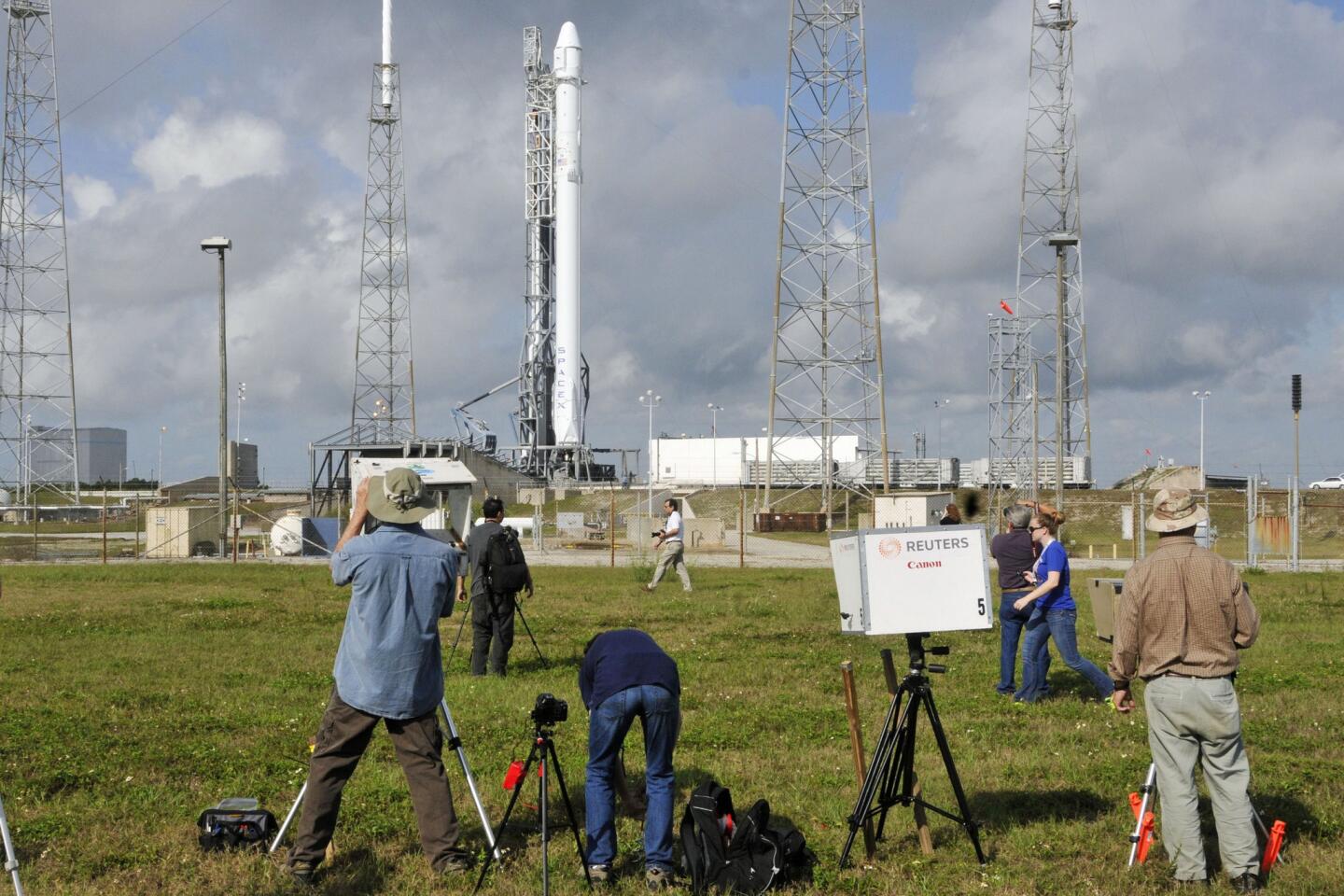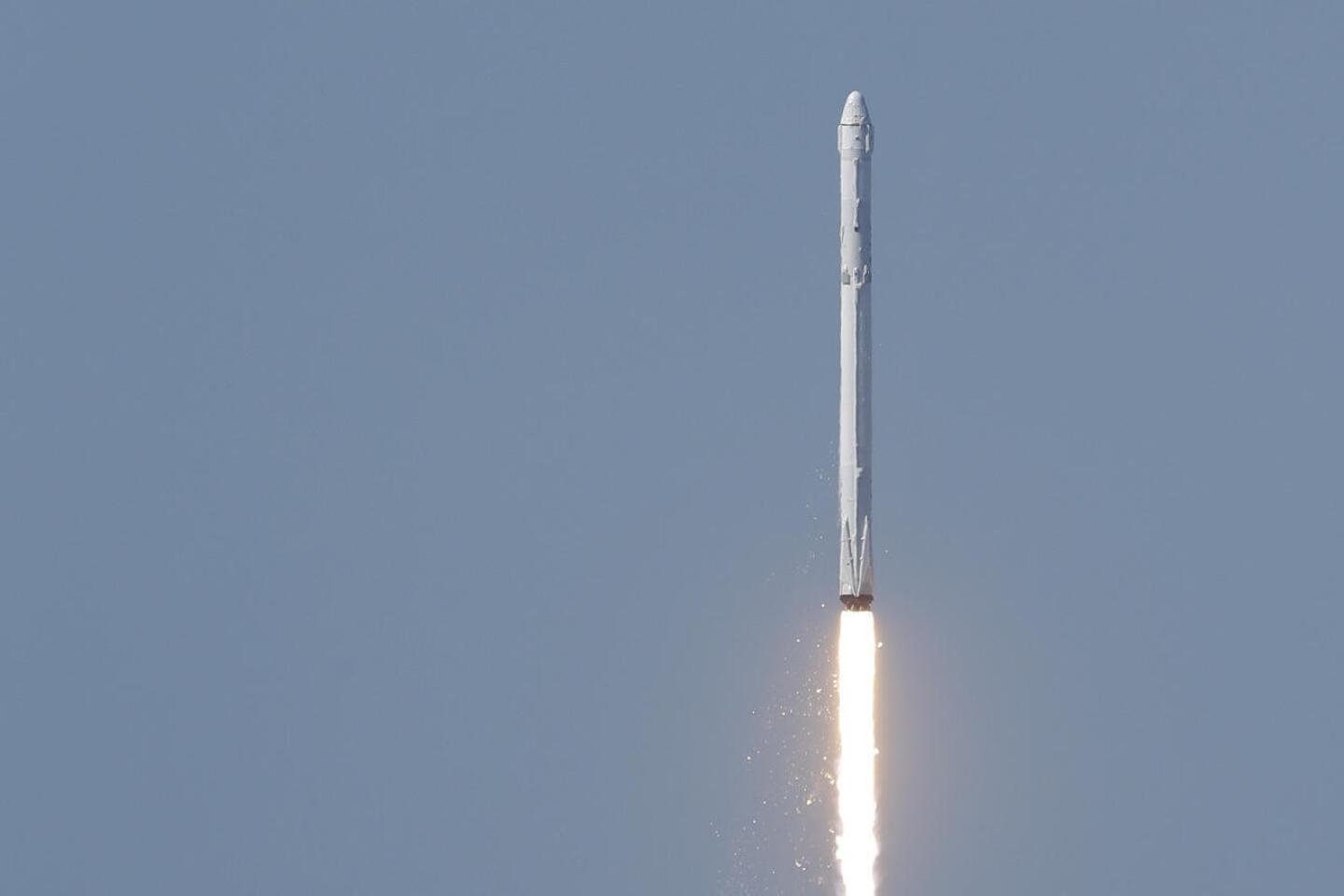SpaceX launches cargo ship to space station but fails to land booster
- Share via
Entrepreneur Elon Musk’s SpaceX successfully launched a rocket loaded with food and supplies to the International Space Station on Tuesday afternoon.
But the company narrowly failed in its third try at landing the spacecraft’s 14-story booster rocket after the launch on a barge floating in the ocean — which would be a first in space history.
“Rocket landed on droneship, but too hard for survival,” Musk tweeted shortly after the launch, referring to the unmanned barge.
Musk tweeted photos taken from the barge, showing the Falcon 9 booster rocket coming down vertically, its engines firing to slow it down.
“Looks like Falcon landed fine,” he tweeted, “but excess lateral velocity caused it to tip over post landing.”
The landing attempt came minutes after the Falcon 9 blasted off from Florida’s Cape Canaveral at 1:10 p.m. Pacific and then sent the Dragon capsule on its way to the space station.
The Hawthorne company hopes to eventually be able to land and reuse the first-stage booster, which includes the nine engines that blast the capsule to space. The planned recovery is part of Musk’s goal of being able to repeatedly fly the same spacecraft, greatly lowering the cost of space travel.
Tuesday’s launch was the company’s sixth cargo delivery flight under its contract with NASA. It plans to attempt the landing again on its next cargo trip, which is scheduled for June.
SpaceX tried two landing attempts earlier this year. In January, the booster made it to the barge but crashed into the deck and went over into the sea. Musk said the rocket’s steering fins had run out of hydraulic fuel.
In a second attempt in February, high waves forced the company to bring the barge back to shore. But the rocket booster, which has an automatic guidance system, still flew itself back to where it was programmed to land, slowing down and coming in vertically before dropping into the water.
The company’s Dragon spacecraft is scheduled to dock Friday at the space station, where it will remain for five weeks.
Follow me on Twitter @MelodyPetersen
More to Read
Inside the business of entertainment
The Wide Shot brings you news, analysis and insights on everything from streaming wars to production — and what it all means for the future.
You may occasionally receive promotional content from the Los Angeles Times.














